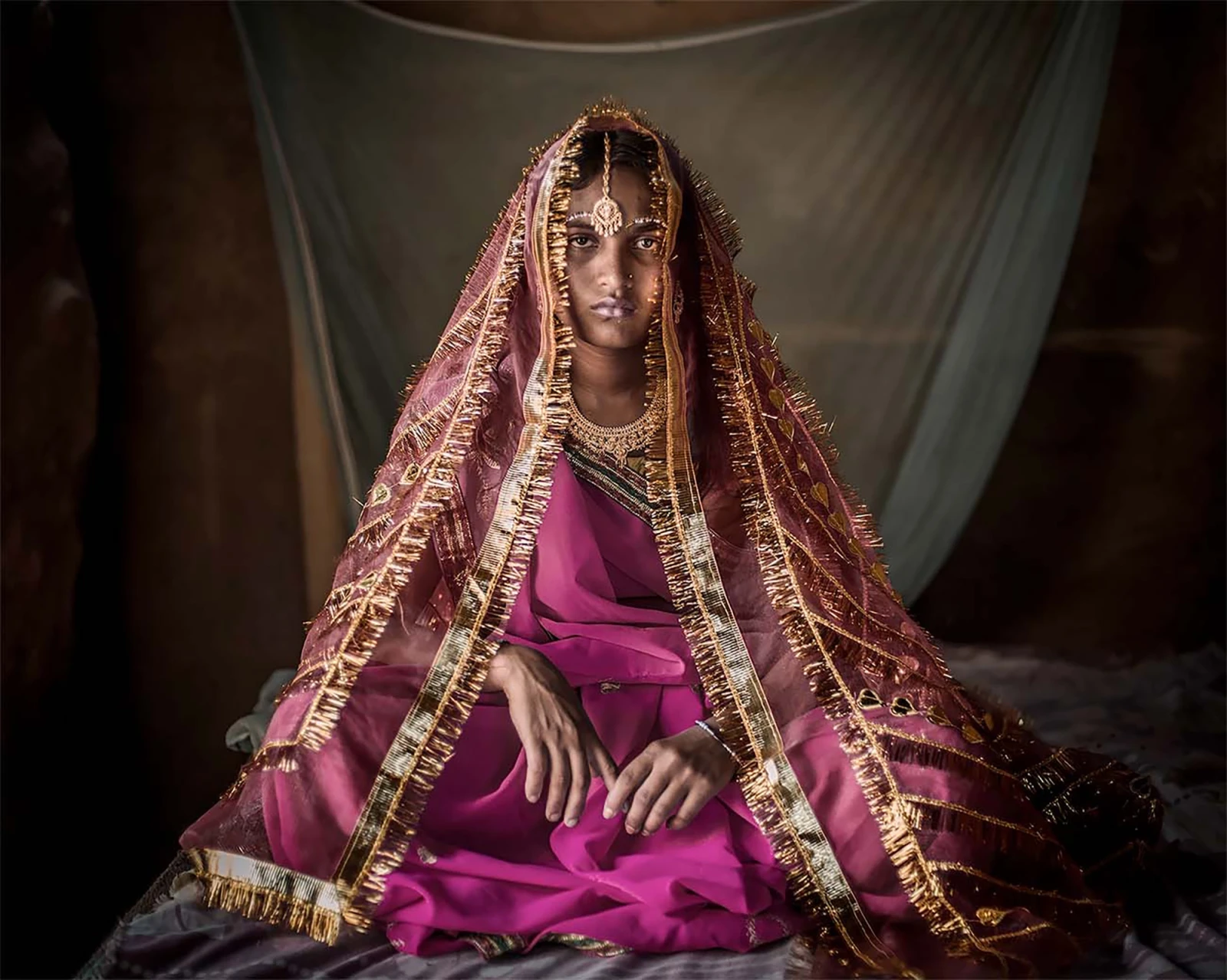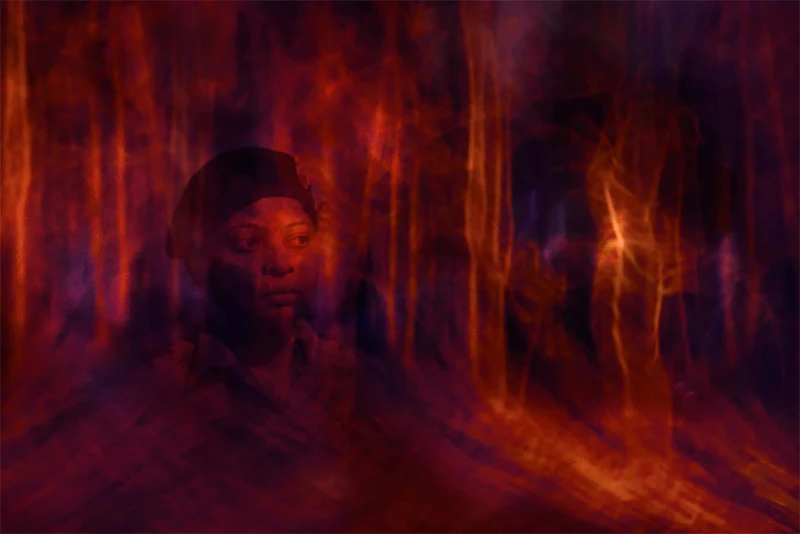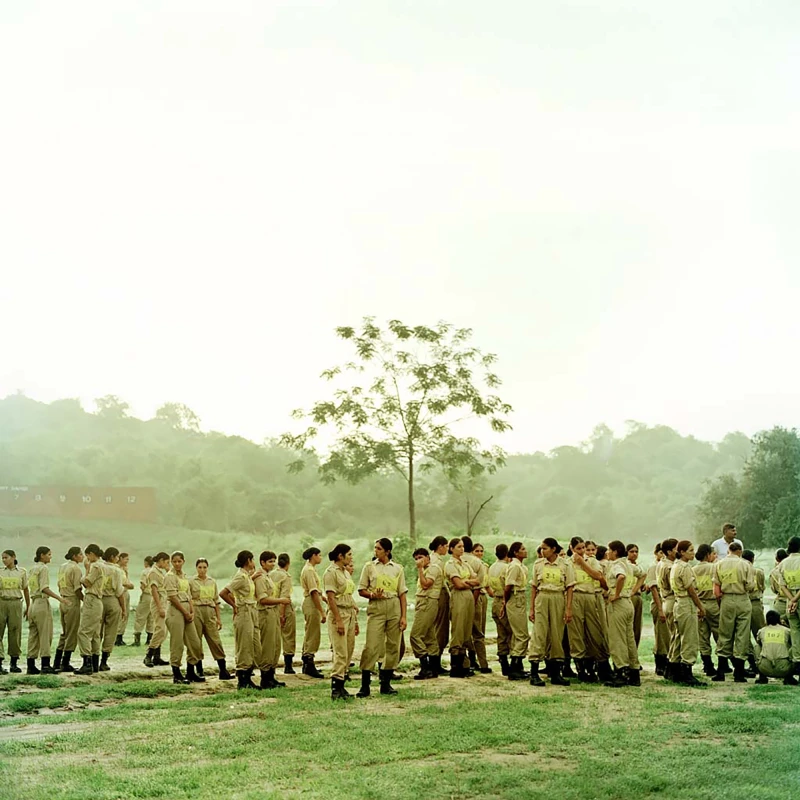Eruptions
Poulomi Basu

Eruptions
Poulomi Basu
Exhibitions
Side Gallery
Eruptions marks Indian transmedia artist and activist Poulomi Basu’s (b.1983, Calcutta) first major international solo exhibition. The immersive installation of VR, film and photography will showcase the development of Basu’s participatory practice between 2009 and 2021.
Shown together for the first time, the gallery and cinema will showcase her acclaimed projects: Blood Speaks: A Ritual Of Exile, Centralia and To Conquer Her Land; which engage with issues of gender, caste and class to expose both the marginalisation and the strength of women and indigenous communities in South Asia. Expanding the possibilities of traditional documentary photography through multi-layered narratives, Basu illuminates contentious complex realities, challenges injustices and advocates for urgent political, social and environmental change.
"It’s been a long road to get this far. This show illuminates the struggles, triumphs and resilience of the women that I have met along the way and who continue to inspire me. I hope it acts as a celebration and recollection of their existence in a world that often erases them."
Blood Speaks: A Ritual Of Exile
Blood speaks is an activism project as well as a documentary artwork. It investigates the practice of chhaupadi, a form of menstrual taboo which prohibits women and girls from participating in normal family activities while menstruating or post childbirth, as they are considered "impure". The origin of this violence is the perceived impurity of a woman's menstrual blood. Hidden, under reported and unresolved, these women are untouchable. Perpetrated under the guise of tradition, this violence takes the form of 'exiles' which keeps menstruation shrouded in mystery and taboo, a weapon to shame women into subservience.
The practice of chhaupadi originates from the superstition that menstruation causes women to be temporarily impure. This superstition arose from a myth that Indra (a Hindu deity) created menstruation to distribute a curse. The tradition begins with an adolescent girl's first menstrual cycle during which she remains in the chhaupadi shed or hut for up to fourteen days; afterwards, she must spend the duration of each monthly period in the shed, until she reaches menopause. Additionally, women who have just given birth must stay in the shed with their children for up to two weeks.
Women are exposed to multiple health and safety risks while practising chhaupadi. Huts or sheds created for the purpose are often poorly constructed and lack heat or ventilation, leaving women exposed to the elements as well as extreme temperatures during different times of year. Women are at risk of developing illnesses such as pneumonia or diarrhoea while practicing chhaupadi and are also vulnerable to attack by snakes and other animals. Risk of asphyxiation high if a woman starts a fire in the hut to keep warm during the winter. Women have also been raped while practising chhaupadi.
Menstrual exile directly impacts on the development of girls. Such untouchability underpins issues such as child marriage, attitudes to reproductive health, maternal mortality and leads to girls dropping out of school. Chhaupadi was outlawed by the Supreme Court of Nepal in 2005, but the tradition has been slow to change. In 2017, Nepal passed a law punishing people who force women into exile during menstruating with up to three months in jail or a fine of 3,000 Nepalese rupees. However, there have only a handful of cases have been filed against those enforcing the practice.

Centralia
The conflict documented in Centralia is largely unreported. Like all conflicts the history and origins are complex, with this conflict in particular both sides are accused of lying about their actions therefore pinning down facts and trying to establish any kind of truth is particularly challenging. The People's Liberation Guerrilla Army (PLGA) is the armed wing of the Communist Party of India, which has been banned by the Indian State. The conflict covers an area known as the red corridor in central, eastern, and southern parts of India and has origins in the 1967 Naxalbari uprising.
Civilians in this area are caught up in the conflict often experiencing violence and harassment from both sides. Some support the PLGA ideology of the cause, while others offer support as the group provide valuable social and infrastructure service which are not provided by the state.
The area is home to vast mineral deposits, for example iron ore, bauxite and coal which are valuable. But it is also home to India's indigenous tribal population. Many of these people rely on the land for their livelihood as subsistence farmers, often living in extreme poverty. In many areas affected by the conflict there is lack of basic facilities such as roads, healthcare, education and drinking water. Mining activity for these valuable minerals poses a threat to the livelihoods of many people living in the area, who rely on the land. Thousands fear displacement as the government moved to exploit the resources located in the area.
The role of women in the PLGA is important as they fight and work alongside men in the conflict. Like all aspects of conflict there are alternative perspectives on what this means for women in the region. For example, they can perhaps be seen as challenging the status quo in a patriarchal and traditional society or as having little choice due to the threats to their communities' livelihood.

To Conquer Her Land
To Conquer Her Land deals with complex geographical, social, and political issues, both historical and contemporary. The India-Pakistan border is heavily militarised and is an area of contested ownership. Particularly in the region of Jammu and Kashmir, where the photographs were taken. Dispute over the region originates from the 194 7 partition of colonial ruled British India, which divided what is now India, Pakistan and Bangladesh along religious lines (Muslim and Hindu) into two countries.
The partition was abrupt and displaced between 10 and 20 million people, creating refugee crisis in the newly constituted countries. There was large-scale violence, with the estimated loss of life related to the partition disputed. Estimates vary between several hundred thousand and two million. The violent nature of the partition created an atmosphere of hostility and suspicion between India and Pakistan that affects their relationship to this day. This is evident in the modern-day approach to policing of the border in this region.
The women shown in Poulomi's photographs are members of the Border Security Force (BSF). This is India's armed border guarding organisation. The BSF amongst other Indian forces have committed human rights abuses in the region. Militant groups fighting against India have also been held responsible for similar crimes, but most abuses have been perpetrated by the armed forces of the Indian government
The photographs show both Muslim and Hindu women working alongside each other, this is significant as there is a long history in India of conflict and tension between the two religious groups. This history and the present-day relationships between Hindus and Muslims in India is complex and the reasons behind it often disputed. However, the partition of India by colonial Britain and the ongoing relationship between India and Pakistan play a significant role in the conflict. This history is what makes the working relationship between Muslim and Hindu women significant. In particular in this location, on the India Pakistan border a geographical symbol of the conflict and history between the two countries and between Muslims and Hindus. In addition, the caste system in India which creates a strict social hierarchy means that these women would rarely work alongside each other in any other situation.
Please be advised that the subject and content of this exhibition may cause distress. In particular, we recommend that all children under 16 are accompanied by an adult, and that parents / guardians use their discretion regarding suitability. We have sofas on the Ground Floor if you wish to take some time to reflect.
Poulomi Basu is a neurodiverse artist known for her exploration of the interrelationship between systems of power and bodies through work that exists at the limits of art, technology and activism.
Basu’s diverse body of work is committed to multiplicity. Eschewing linear notions of history, her approach to investigating themes such as the shifting notions surrounding landscape and the conditions female experience are cyclical in nature. With roots in photography, her practice demonstrates a fidelity to no single artistic modality or creative process; rather, interdisciplinary pursuits that are in constant, active flux. Her evolving, embodied approach to artmaking is emblematic of the plurality of experiences and the myriad ways in which identity is constructed in contemporary culture.
Her name sounds like ‘follow me’ with a ‘P’. She was raised by her mother in Calcutta, India and found early inspiration in the city’s rich cinematic history. After her father’s sudden death when Poulomi was 17, her mother told her to leave home as soon as her studies were complete so that she may follow her dreams and live a life of breadth and choices that was denied to her.
She has become widely known for her influential works Blood Speaks, Centralia, To Conquer Her Land, Fireflies to name a few. Her focus on the intersectionality of ecological, racial, cultural, political and personal collisions experienced specifically by womxn of the global south, such as herself gives agency to those whose voices are deliberately silenced, ferociously advocating for womxn through her practice as an artist and activist for more than a decade. Shifting between mediums Basu often combines the real and the fantastical and has to date worked with photography, performance, installation, virtual reality, and film influenced by magical realism, and speculative futures.
For more information on Poulomi Basu visit: poulomibasu.com
